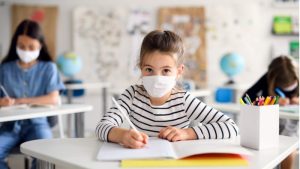The COVID-19 pandemic caused a dramatic uptick in distance and hybrid learning, which exacerbated the digital learning divide. However, new research has found that the digital learning equity gap has returned to pre-pandemic levels.
Eleven historically black colleges and universities (HBCUs) are splitting $25 million in grant funding to help overhaul IT campus infrastructure and prepare students for the IT job market.
The International Society for Technology in Education (ISTE) has announced new board members.
As with most schools, St. Patrick Academy had to pivot to remote learning this spring. Since then, the small catholic high school in Providence, R.I., has overhauled its classroom technology to improve the hybrid learning experience for students in the classroom and at home.
The Department of Defense (DoD) is awarding $50 million under the Defense University Research Instrumentation Program (DURIP) to 150 university researchers that will enable universities to perform research that boosts the United States’ technological edge.
In a new report by TouchNet, a card system vendor, college-age students enrolled at both two- and four-year institutions overwhelmingly agreed that technology on their campuses was as good or better post-COVID-19 pandemic.
Maryland’s Carroll County Public Schools (CCPS) has come up with a way to provide IT support to students and staff while still keeping everyone safe during the COVID-19 pandemic – drive-up tech support.
At the start of the Fall 2020 semester, Texas A&M opened the doors to an $85 million next-generation classroom building, complete with innovative tech and infrastructure.
While the COVID-19 pandemic has changed nearly all aspects of life, it has had a radical impact on the way students are learning.
At the very beginning of the COVID-19 pandemic, the Illinois College of Medicine at Peoria (UICOMP) was looking for ways to safely transition to virtual medical student training.













